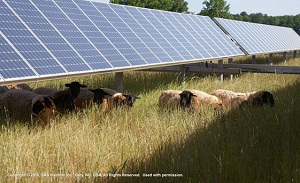Week in review: Solar continues record growth in US
 As the year comes to a close, once again solar has experienced record growth in the U.S. This comes as new reports show that solar and renewables continue to fall in price and renewables are seen more and more as a mainstream power source. It also comes as some of the largest PV arrays ever conceived of are nearing completion just a few short years after they were first envisioned.
As the year comes to a close, once again solar has experienced record growth in the U.S. This comes as new reports show that solar and renewables continue to fall in price and renewables are seen more and more as a mainstream power source. It also comes as some of the largest PV arrays ever conceived of are nearing completion just a few short years after they were first envisioned.
More solar was installed by the third quarter of 2012 in the U.S. than in the whole year of 2011—which previously was the best year for solar in the country. That’s according to the latest GTM Research and the Solar Energy Industries Association “U.S. Solar Market Insight: Third Quarter 2012.” By the end of third quarter 2012, 1,992 megawatts of new photovoltaics came online in the U.S. That compares to slightly more than 1,885 MWs installed in all of 2011. In all, the report projected that roughly 3.2 gigawatts of solar will come online in 2012, with 2013 being even better.
The increase in installations is coinciding with a drop in price, according to a new report, “Module Cost Structure Update: The Path to Profitability,” from Lux. The report contended that because of overcapacity and other issues the cost of solar photovoltaics is likely to drop to 48 cents per watt by 2017. Already, the report said, the price for modules has fallen to roughly 70 cents per watt. While manufacturers have been forced to reduce their costs, the costs for the raw materials that go into solar have not declined at the same rate, which means that to compete, some PV manufacturers are losing money to sell their products.
With news like that, perhaps it’s apropos that another recent study predicted that adding in significant amounts of wind and solar could halve the cost of electricity by 2030. A new study released by the University of Delaware predicted that if 90 percent of the electric grid was powered with solar and wind and other renewables, it would drastically cut the cost of electricity. In developing the study researchers tested 28 billion combinations of renewable energy sources and storage mechanisms using data from the PJM Interconnection. The report contended that the best way to use renewables in such a manner is to create an oversupply of renewables on the grid that could produce more energy than needed during peak hours.
In terms of large-scale solar deployments, two made the news last week. First off, the first large utility-scale solar project on Native American lands got a big nod last week when Los Angeles Mayor Antonio Villaraigosa announced that the city would get solar power through long-term contracts from a number of new providers, including a 250 megawatt contract with the Moapa Band of Paiutes in Nevada, who plan to build a 350 megawatt solar farm on their tribal lands. It’s the majority of the 460 megawatts of solar the contracts the mayor announced the Los Angeles Department of Water and Power totaling 460 megawatts of clean solar power for LADWP customers.
Another one of the giant solar projects in California, SunPower Corp.’s California Valley Solar Ranch, expects to have 130 megawatts of the 250 megawatt project operational by the end of 2012. The project will supply power to Pacific Gas & Electric (PG&E) customers.
To help make sure solar continues to spread worldwide, the U.S. Department of Energy’s SunShot Initiative has partnered with the Australia Solar Institute (ASI) to create the United States-Australia Solar Energy Collaboration (USASEC) in an effort to fund the next generation of solar technologies. Under the partnership, the countries have already promised to fund $83 million in collaborative projects.



